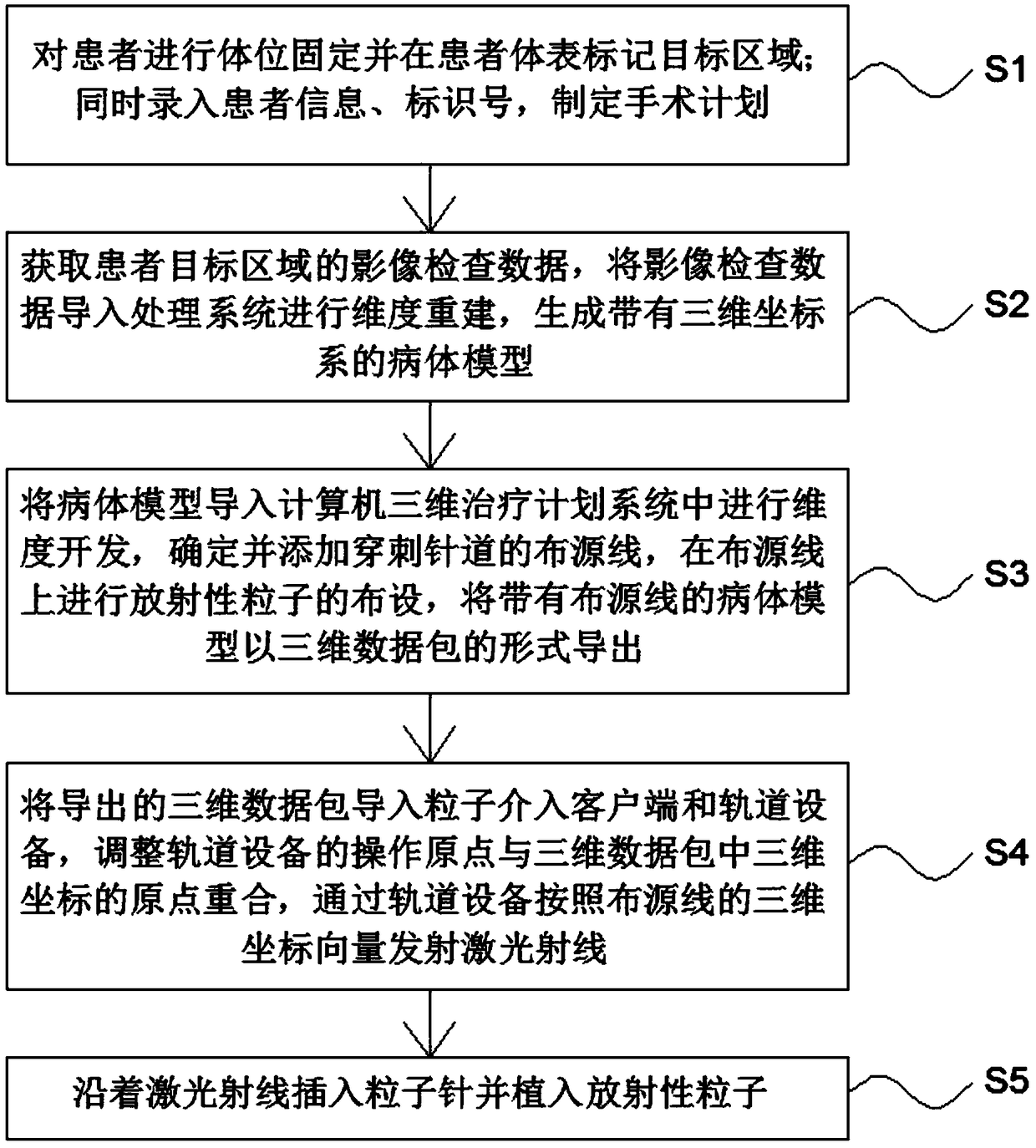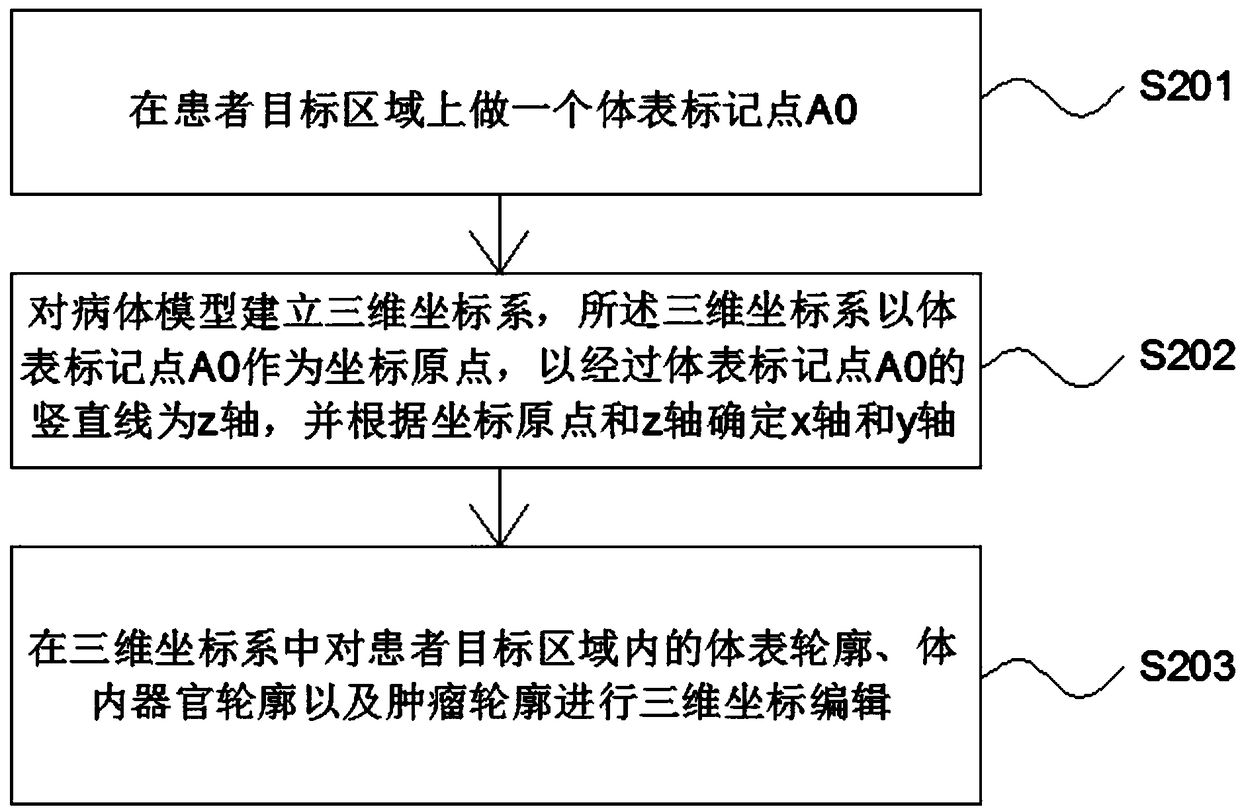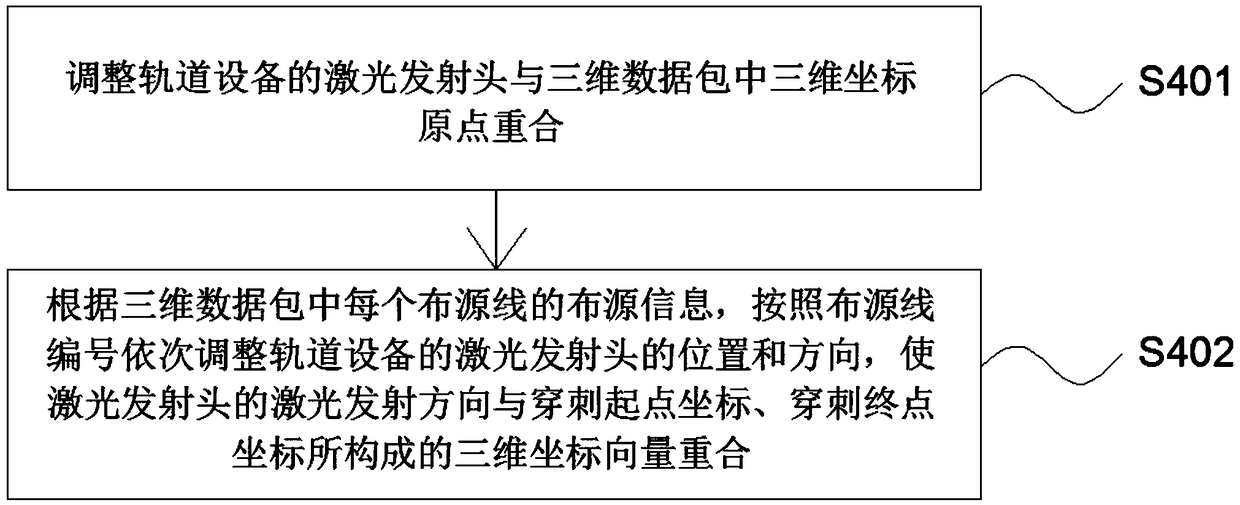Method for realizing radioactive particle implantation by using laser guidance
A radioactive particle and laser-guided technology, applied in radiation therapy, X-ray/γ-ray/particle irradiation therapy, treatment, etc., can solve the problems of long production cycle of 3D printing template, inability to adjust intraoperatively, difficult technical operation, etc. , to achieve the effect of reducing treatment risk, reducing economic burden, and reducing surgical risk
- Summary
- Abstract
- Description
- Claims
- Application Information
AI Technical Summary
Problems solved by technology
Method used
Image
Examples
Embodiment 1
[0066] like figure 1 As shown, a method for implementing radioactive seed implantation using laser guidance includes the following steps:
[0067] Step S1, fix the patient's body position and mark the target area on the patient's body surface; input patient information and identification number at the same time, and formulate a surgical plan;
[0068] Step S2, acquiring the image examination data of the target area of the patient, importing the image examination data into the processing system for dimensional reconstruction, and generating a disease body model with a three-dimensional coordinate system;
[0069] Step S3, import the disease body model into the computer three-dimensional treatment planning system for dimensional development, determine and add the source line of the puncture needle track, deploy the radioactive particles on the source line, and convert the disease body model with the source line into a three-dimensional shape. Derived in the form of data packe...
Embodiment 2
[0074] On the basis of the above embodiment, as a preferred solution, in step S1, the image inspection data is the image inspection result of the target area by ultrasound, CT or MRI; it is worth noting that, as a preferred solution, The imaging examinations of ultrasound, CT or MRI here use contrast-enhanced scanning technology. Clinical trials have fully proved that contrast-enhanced scanning technology can significantly improve the resolution and diagnostic accuracy of organs and tumors compared with ordinary plain scanning. Taking vertebral body CT examination as an example, the accuracy rate of plain CT scan is 91%, and the accuracy rate of contrast-enhanced CT scan can reach 94-98%.
Embodiment 3
[0076] like figure 2 As shown, on the basis of the above embodiment, as a preferred solution, in step S2, the disease body model is superimposed and synthesized by the image examination data within the target area of the patient, including the body surface contour data in the target area of the patient, the body surface contour data in the patient's target area Organ contour data and tumor contour data; further, the step of dimensional reconstruction in step S2 is,
[0077] Step S201: make a body surface marking point A0 on the patient target area;
[0078] Step S202: establishing a three-dimensional coordinate system for the diseased body model, the three-dimensional coordinate system takes the body surface marker A0 as the coordinate origin, the vertical line passing through the body surface marker A0 as the z-axis, and determines x according to the coordinate origin and the z-axis. axis and y axis;
[0079] Step S203: Perform three-dimensional coordinate editing on t...
PUM
| Property | Measurement | Unit |
|---|---|---|
| Diameter | aaaaa | aaaaa |
| Thickness | aaaaa | aaaaa |
Abstract
Description
Claims
Application Information
 Login to View More
Login to View More - R&D
- Intellectual Property
- Life Sciences
- Materials
- Tech Scout
- Unparalleled Data Quality
- Higher Quality Content
- 60% Fewer Hallucinations
Browse by: Latest US Patents, China's latest patents, Technical Efficacy Thesaurus, Application Domain, Technology Topic, Popular Technical Reports.
© 2025 PatSnap. All rights reserved.Legal|Privacy policy|Modern Slavery Act Transparency Statement|Sitemap|About US| Contact US: help@patsnap.com



